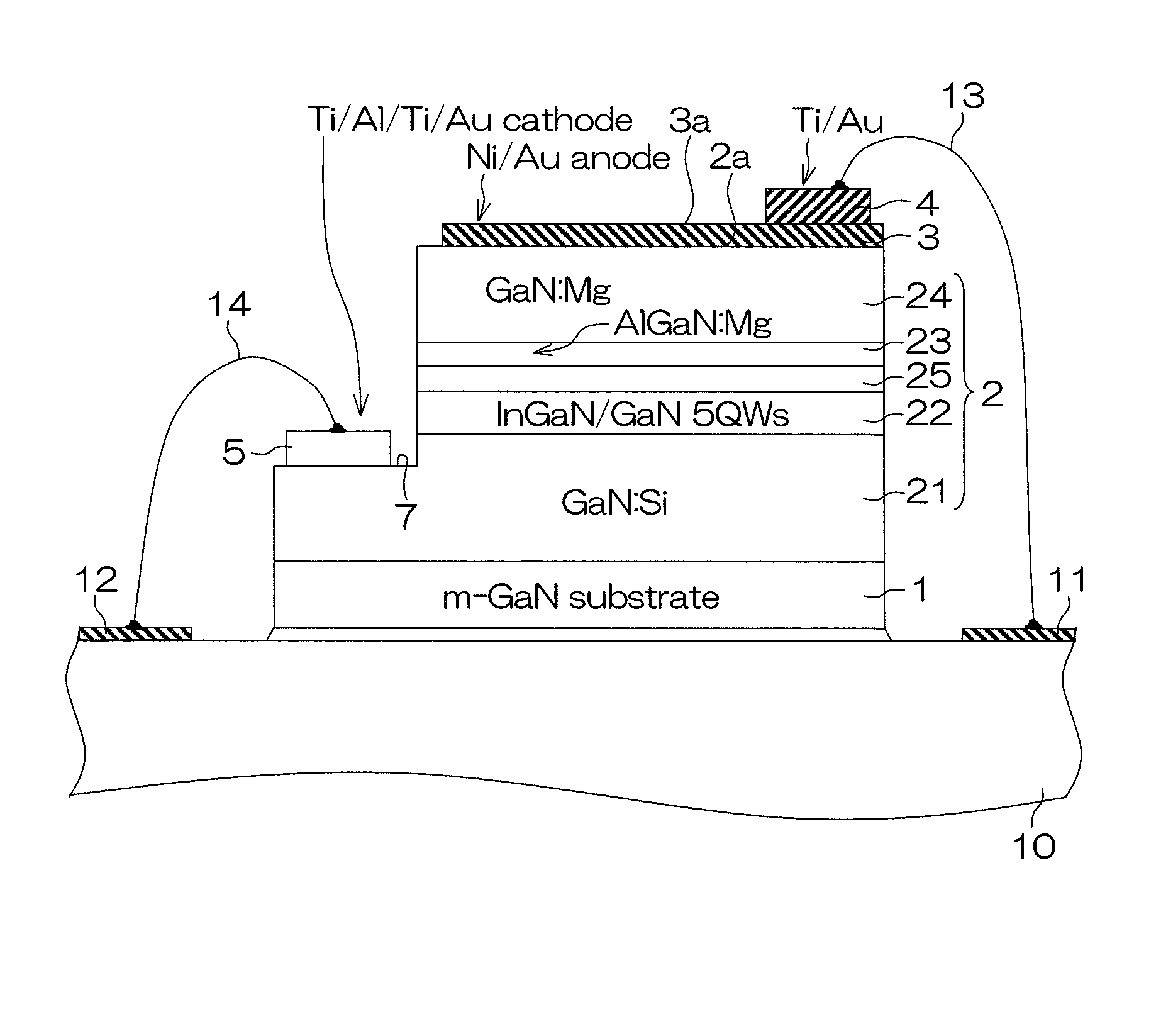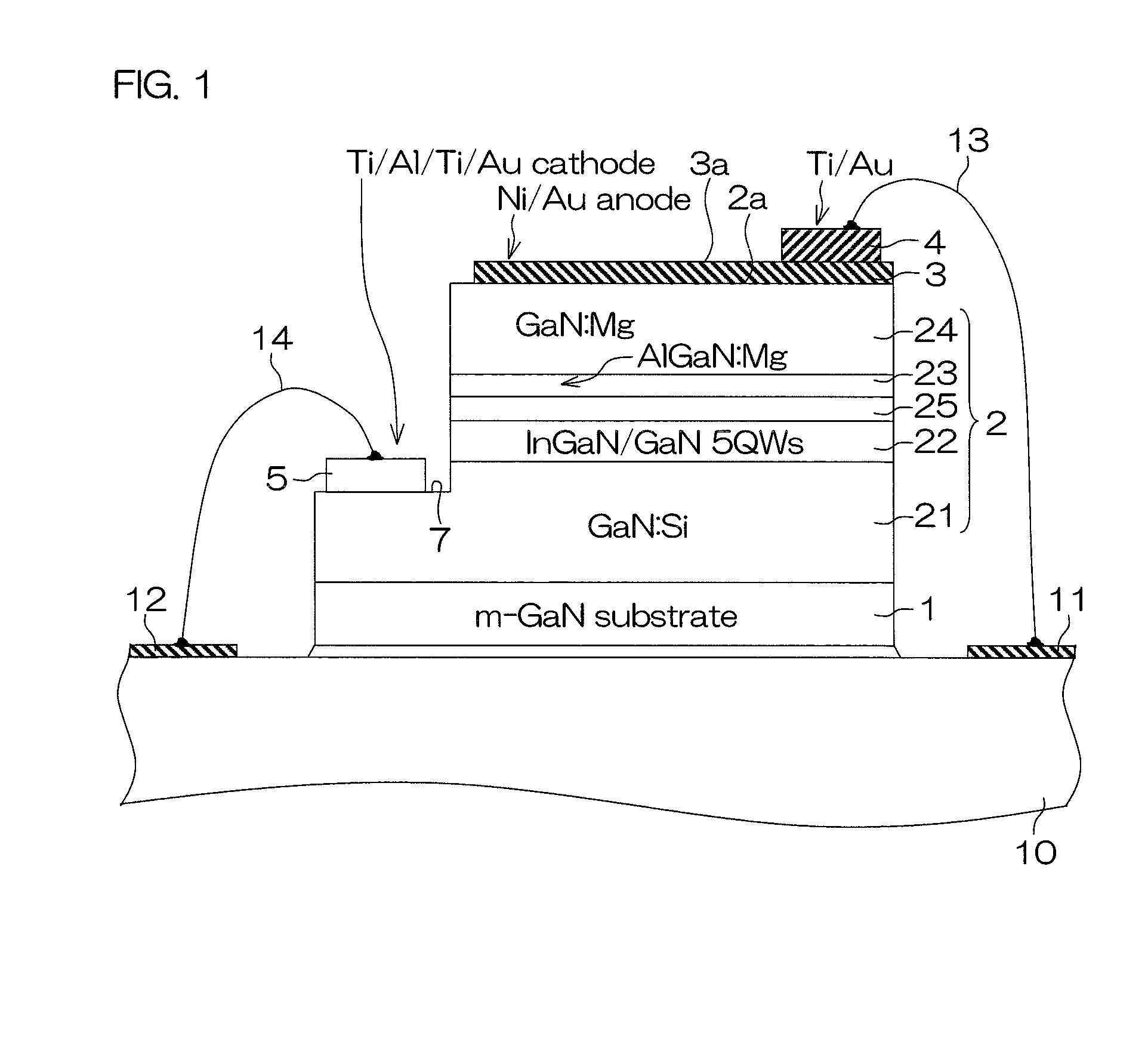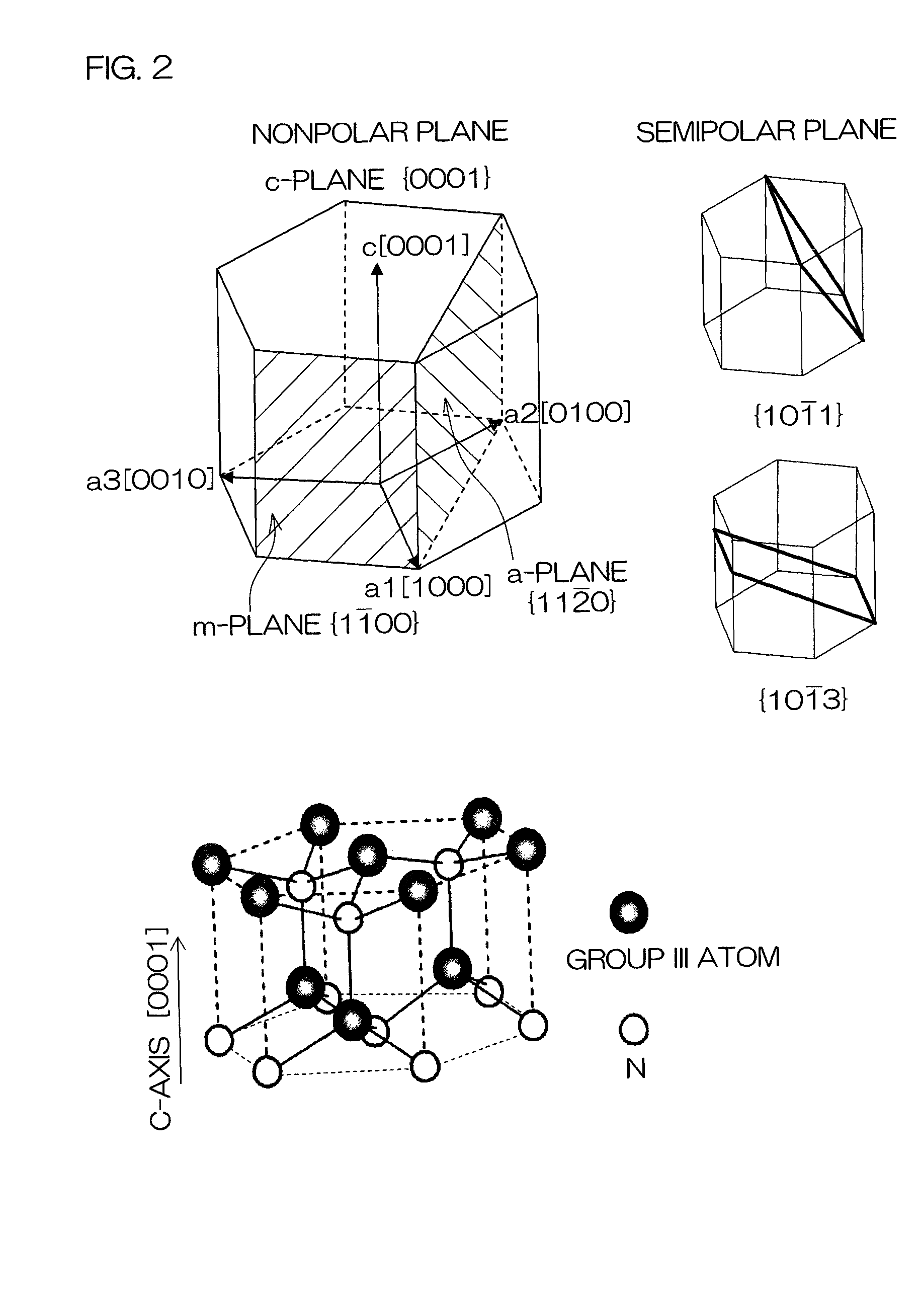Light-emitting device
a light-emitting device and light-emitting technology, which is applied in the direction of solid-state devices, lasers, semiconductor lasers, etc., can solve the problems of affecting the brightness of the display, the irregularities of the polarized light, and the increase of the loss of the polarization plate on the incidence side, so as to achieve excellent end faces and maximize energy utilization. , the effect of efficient generation
- Summary
- Abstract
- Description
- Claims
- Application Information
AI Technical Summary
Benefits of technology
Problems solved by technology
Method used
Image
Examples
second embodiment
[0092]FIG. 8 is a schematic diagram for illustrating the structure of a light-emitting diode according to the present invention. Referring to FIG. 8, portions corresponding to the respective portions shown in the aforementioned FIG. 1 are denoted by the same reference numerals. According to the embodiment, a group III nitride semiconductor layered portion 2 is grown on a GaN monocrystalline substrate 1, and the GaN monocrystalline substrate 1 is thereafter removed by polishing or the like. Thus, an n-type contact layer 21 is exposed. A cathode electrode 5 is formed on the surface (the lower surface) of the exposed contact layer 21. The cathode electrode 5 is bonded (die-bonded) to a wire 12 on a support substrate 10. Thus, a light-emitting diode structure is fixed to the support substrate 10. On the other hand, an anode electrode (transparent electrode) 3 formed in contact with a surface 2a of the group III nitride semiconductor layered portion 2 on the light extraction is connected...
third embodiment
[0099]In other words, a surface 21a (a surface on a light extraction side) of the n-type contact layer 21 positioned on a side opposite to the support substrate 10 is finished into a mirror surface, similarly to the case of the On the other hand, a GaN semiconductor 2 is etched (plasma-etched, for example) until the n-type contact layer 21 is exposed from the side of the support substrate 10, and a recess 17 is formed. A cathode electrode 5 in contact with the n-type contact layer 21 is formed in the recess 17. The cathode electrode 5 and the wire 12 on the support substrate 10 are connected with each other by a metallic post 18.
[0100]Also in the structure of the embodiment, the surface 21a on the light extraction side of the group III nitride semiconductor layered portion 2 is a mirror surface, whereby light emitted from a quantum well layer 22 can be extracted outward in a hardly influenced polarization state.
fifth embodiment
[0101]FIG. 11 is a perspective view for illustrating the structure of a semiconductor laser diode which is a light-emitting device according to the present invention, and FIG. 12 is a longitudinal sectional view thereof.
[0102]A semiconductor laser diode 70 is a Fabry-Perot laser diode including a substrate 71, a group III nitride semiconductor multilayer structure 72 formed on the substrate 71 by crystal growth, an n-type electrode 73 formed to be in contact with the rear surface (the surface opposite to the group III nitride semiconductor multilayer structure 72) of the substrate 71 and a p-type electrode 74 formed to be in contact with the surface of the group III nitride semiconductor multilayer structure 72.
[0103]The substrate 71 is constituted of a GaN monocrystalline substrate in the embodiment. The major surface of the substrate 71 is defined by an m-plane, and the group III nitride semiconductor multilayer structure 72 is formed by crystal growth on the major surface. Theref...
PUM
 Login to View More
Login to View More Abstract
Description
Claims
Application Information
 Login to View More
Login to View More - R&D
- Intellectual Property
- Life Sciences
- Materials
- Tech Scout
- Unparalleled Data Quality
- Higher Quality Content
- 60% Fewer Hallucinations
Browse by: Latest US Patents, China's latest patents, Technical Efficacy Thesaurus, Application Domain, Technology Topic, Popular Technical Reports.
© 2025 PatSnap. All rights reserved.Legal|Privacy policy|Modern Slavery Act Transparency Statement|Sitemap|About US| Contact US: help@patsnap.com



